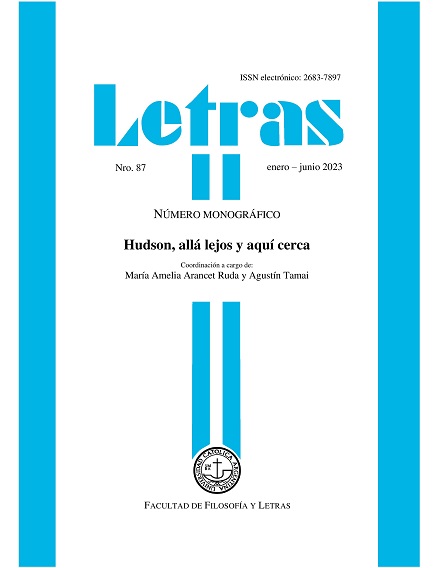The Connection Between Japan and Argentina Through William Henry Hudson: Exploring Familial Ties, Translations and Reception
DOI:
https://doi.org/10.46553/LET.87.2023.p15-35Abstract
William Henry Hudson is a significant figure in the relationship between
Japan and Argentina. There are two distinct events that connect him with Japan: his
familial ties and the translations of his works into Japanese. This paper aims to explore
both these aspects by introducing the history of the Hudson family and analyzing its
reception in Japan. Hudson’s familial ties with Japan began when his niece, Laura,
married Yoshio Shinya, who was the first immigrant from Japan to Argentina after the
establishment of diplomatic relations between the two countries had started. Their
daughter, Violeta, went on to become the first director of the William Henry Hudson
Museum in Buenos Aires. With Violeta’s involvement, the museum established
collaborations with Japan. Through the analysis of Hudson’s translated works, this
study reveals that there were five key aspects of their reception in Japan. First, the
translated works were introduced as a source of information about South America for
immigrants. Second, they were recognized as a part of the English literature and the
original piece work of the movie Green Mansions. Third, they were adapted for juvenile
literature. Fourth, they sparked interest in the natural history of South America. And
lastly, they were used as model texts for English teaching. Even after his death, the
cultural exchange initiated by Hudson continued, and the Argentine writer and naturalist
became a symbol of the friendly relations between Japan and Argentina.
Downloads
Downloads
Published
How to Cite
Issue
Section
License
Copyright (c) 2023 Kana Takaki

This work is licensed under a Creative Commons Attribution-NonCommercial-ShareAlike 4.0 International License.
















